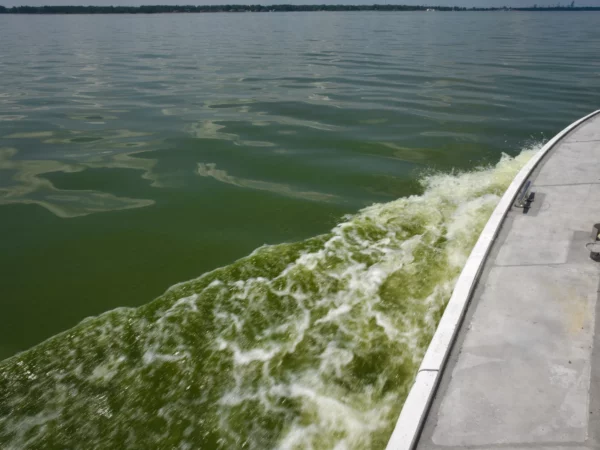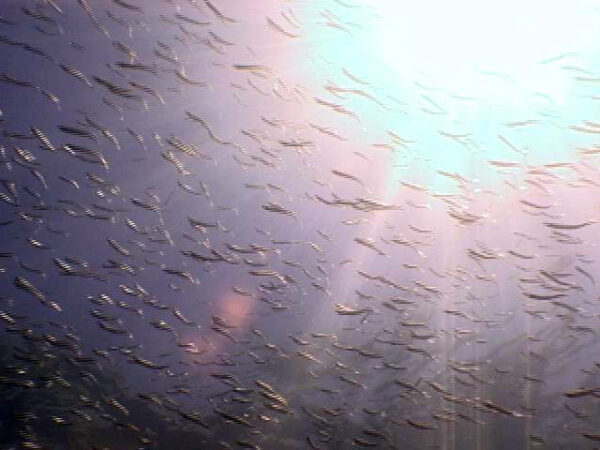
This article was republished here with permission from Planet Detroit.
By Brian Allnutt, Planet Detroit
The Supreme Court’s recent ruling to significantly reduce Clean Water Act wetlands protections has caused alarm among environmental advocates who fear it will endanger crucial habitats and human health and safety. According to the environmental legal group Earthjustice, the court’s decision in the Sackett v. EPA case will endanger over 118 million acres of wetlands across the country, an area larger than the state of Montana.
But Michigan’s wetlands may fare better than other states because of strong state regulations.
The court’s Sackett ruling restricts what can be considered as “waters of the United States” (WOTUS) under the Clean Water Act, removing safeguards for wetlands that don’t meet the standard of having “continuous surface connection” to the rivers, lakes and streams that are protected as “navigable waters.”
This means many ephemeral headwater streams, or areas that flood periodically, will lose their protections, endangering ecosystems that provide habitat for wildlife, filter out pollutants, sequester stormwater, and help prevent downstream flooding.
Impacts on Michigan wetlands from the Sackett decision will likely be “minimal” in the immediate future, according to Mike Shriberg, an environmental policy expert at the University of Michigan’s School for Environment and Sustainability (SEAS).
In addition to the state’s delegated authority under the Clean Water Act, Part 303 of Michigan’s Natural Resources and Environmental Protection Act (NREPA) regulates wetlands not covered by federal law, including any that are within 1,000 feet of the Great Lakes and Lake St. Clair, within 500 feet of an inland waterway, or larger than five acres in size. Michigan law also allows local governments to enact ordinances to protect wetlands less than 5 acres in size.
But Shriberg said that while Michigan state law provides more protection than the Clean Water Act, the Supreme Court’s decision still carries some risk for the state.
“What’s happened now with the Supreme Court, they’ve made the floor lower,” he said of the baseline standards provided by the Clean Water Act. And Republicans could seize upon this if they retake control of state government.
“You better believe that polluters will make a push to go down to that floor,” Shriberg said.
And Michigan has a lot to protect. Wetlands cover 15% of the state; water makes up 41.5% of its surface area. Groundwater, which is hydrologically connected to wetlands, is also a vital resource, providing drinking water for 45% of the state. Liz Kirkwood, executive director of the nonprofit For Love of Water, said the Supreme Court’s decision represented “a complete severing of the hydrologic cycle,” ignoring the connection between groundwater and surface water that allows pollutants like toxic PFAS to migrate into waterways and impact drinking water sources.
Kirkwood said she and other experts were beginning to understand the impact on Michigan. But she noted that Michigan is one of only three states with authority to carry out section 404 of the federal Clean Water Act, which requires those who disturb federally protected wetlands to obtain a permit and take steps to avoid harm.
“That means those states have wetland regulations that, in some cases, are more stringent than the federal regulations,” Kirkwood said.
However, more lax protections in other states could also impact the Great Lakes and some Michigan waterways. Wisconsin, where wetlands cover around 15% of the state, shares a long land border with Michigan’s Upper Peninsula and has significant coastlines on Lake Michigan and Superior. In 2017, the Wisconsin legislature and Republican Gov. Scott Walker rolled back the state’s historically strong wetland protections.
“The only wetlands that are really regulated in [Wisconsin] are the ones that are falling under federal jurisdiction,” Melissa Scanlan, a water policy expert at UW-Milwaukee, told Milwaukee Public Radio.
As the Biden administration develops a new definition of WOTUS to account for the Supreme Court’s decision, Shriberg says there’s likely to be an interval where some states are unclear about what’s protected under the Clean Water Act. He fears developers and agribusiness may exploit this period to fill wetlands.
“The problem is that when you fill in a wetland, even if you do mitigation, that wetland is essentially lost forever,” Shriberg said. Research backs this up, showing the difficulty of restoring the soil carbon and plant and animal communities that help constitute a wetland ecosystem.
In the long run, Shriberg hopes that Congress can pass legislation to clarify language in the Clean Water Act that would restore the protections lost with the Sackett decision. For now, state and local action may be needed to protect resources Kirkwood notes are private and public.
“When we degrade our public waters and lands, it necessarily degrades our private lands,” she said. “I think this decision creates a black-and-white world, and our ecosystems aren’t like that. Our communities aren’t like that.”
Catch more news at Great Lakes Now:
Landmark Great Lakes coastal wetland program continues restoration drive that began in 2010
Great Lakes Moment: New trail connects people with secluded Detroit River wetlands
Featured image: Wetlands (Photo by James Proffitt)
1 Comment
-
When you include the effects of climate change and the ecological and economic importance of wetlands habitat, recharge, and flood control functions, the Sacket decision not only defies legal principles, it denies reality. Michigan also loses an ally in the U S Corps of Engineers in wetland protection here in the Great Lakes Basin.




